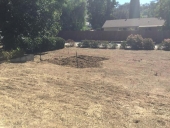
 1
1




 2
2




carrots, rutabagas, potatoes, onions, celery, parsnips, and tomatoes

 1
1




Joslyn Bloodworth wrote: We like carrots, rutabagas, potatoes, onions, celery, parsnips, and tom atoes. What of these will grow in a desert environment and are there other foods that we could grow that we might like given our tastes?






Subtropical desert (Köppen: BWh)
Elevation: 1090 ft Annual rainfall: 7"

 1
1




John Elliott wrote:
Carrots have a struggle here in my heavy Georgia clay. I'm not going to give up on them though, I've got some new hugelbeds that I am going to try them in.
Order copies of my book, Dairy Farming: The Beautiful Way at
www.createspace.com
Help spread the word! Thanks!
struggle - hustle - soul - desire




Subtropical desert (Köppen: BWh)
Elevation: 1090 ft Annual rainfall: 7"








Adam Klaus wrote:
Bit of a thread drift, but have you tried the varietal 'Shin Kuroda'? I get seeds from Fedco. It is a Japanese varienty that grows short and fat, giant carrots. They seem to really power through my heavy clay and yield really well. For me, more key than the heavy clay was my boron levels, which were low. Once ammended, I am having good results with the Shin Kuroda carrots.
Hope that helps!





John Elliot wrote:
In my garden I break one of the big rules about growing brassicas: "wait 3 years before planting another member of the cabbage family or you will get cabbage root rot". Root rot, dog snot, I say.Every fall I plant a variety of brassicas, some right where I did last year, and I have yet to see a problem. Of course my garden has LOTS of diversity, so root rot nasties don't get the chance to hide out and wait for their favorite meal to come along, something else eats them first.
Subtropical desert (Köppen: BWh)
Elevation: 1090 ft Annual rainfall: 7"




 1
1




Joslyn Bloodworth wrote:So adding fresh dirt out of my compost pile as well as things like the poo from my neighbors horses and compost tea along with regular tilling between crops should do me?

|
I'm not sure if I approve of this interruption. But this tiny ad checks out:
Willow Feeder movie
https://permies.com/t/273181/Willow-Feeder-movie
|





